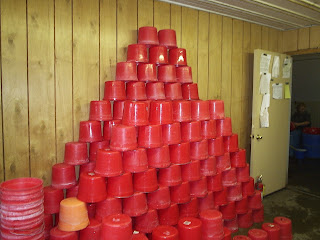Feeding Fresh vs. Stored Colostrum: Does it make a difference?
Does it make a difference? The differences we are looking for are in calf health and immune status.
We have known for some time that the maternal colostral immune cells do not survive freezing and thawing. Also, the survival of these cells in refrigerated colostrum is measured in hours. That is, it appears that the numbers of these cells surviving after 12 hours begin to go down rapidly. I have been told that after 48 hours the numbers are so low there are few potential health benefits. I have not been able to find a good reference that provides quantitative values on this rate of decline, however.
A team at Virginia Tech set out to measure health and immune status effects of feeding colostrum with and without these maternal colostral immune cells. [Langel, S.N. and Others, "Effect of feeding whole compared to cell-free colostrum on calf immune status: The neonatal period, " Journal of Dairy Science 98:3729-3740 June 2015] The sample size was small - less than 20 calves in each treatment group.
1. Fecal consistency scores - "No differences were seen between treatments [whole vs. cell-free colostrum] in fecal consistency scores." (p. 3733) On a scale of 0 (normal) to 3 (severe scours) the values peaked for both groups around day 14 at about 1.8. Thus, neither group had excessively severe scours and the duration was apparently relatively short.
2. Respiratory scores - Most of the time most of the calves did not have respiratory symptoms. There was a spike in symptoms (nasal discharge, coughing) for both groups around days 12-15 with more cell-free calves showing symptoms than those receiving whole colostrum. There was another similar spike around days 37-39 with the same pattern.
The authors very cautiously conclude:
"Adoptive transfer of whole immune cells at birth may play a role in the immune status of neonatal dairy calves. Enhancing immune function in calves could lead to increased disease resistance, resulting in healthier animals entering the dairy herd." (p3739)
So, what do I conclude?
1. Given the research setting (Virginia Tech dairy farm) with relatively low pathogen exposure, excellent colostrum management and exemplary animal care the frequency of ill health overall was low. Regardless of the type of colostrum fed the calves remained healthy throughout the study period.
2. Given that some of the farms for which I provide consulting services have significant pathogen exposure and colostrum management that provides only "average" colostral-based immunity I am guessing that there is a health advantage to feeding "fresh" colostrum compared to "stored" colostrum that is similar to the "cell-free" colostrum in the research.
My experience with farms that have adopted the "milk it and feed it" management strategy (colostrum is fed within an hour after collection) is uniformly positive. However, it is difficult to isolate the effects of this strategy from the increased attention to overall colostrum management that has accompanied this management change.



